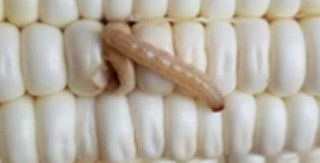
Ostrinia furnacalis is a species of moth in the family Crambidae, the grass moths. The ostrinia furnacalis is second only to maize downy mildew as the most prevalent corn pest, this insect can cause devastating losses in a corn field. There is currently extensive research on eradicating this pest from corn crop in Asia, including the use of biological agents and toxins. The gene editing technology can generate new genotypes or generate genotypes similar to those of other insects. Gene editing technologies, especially CRISPR/Cas9, offer entomologists a new way to control pests and have great potential for application to pest control.
Ostrinia furnacalis damage has become a major obstacle to the development of corn production. Gene editing technology allows editing of specific genes in the larvae of ostrinia furnacalis to enable widespread pest control. Lifeasible provides the service of gene editing for ostrinia furnacalis with zinc-finger nucleases (ZFNs), transcription activator-like effector nucleases (TALEN) and CRISPR/Cas9 to reduce the number of ostrinia furnacalis.
| Service Content | Detail |
| Larvae |
|
| Adults |
|
Lifeasible offers ZFNs to knockout the gene of ostrinia furnacalis. We use ZFNs to obtain the results of gene knockout according to different stages of the cell cycle differently. The knockout rate is not less than 90% in ostrinia furnacalis.
Lifeasible provides two methods to knockout the specific gene in ostrinia furnacalis through TALEN. One method is constructing the vector and then transgene to knockout gene. Another is injecting mRNA synthesized in vitro and the knockout rate in ostrinia furnacalis can reach 90%.
Lifeasible provides CRISPR/Cas9 to edit the gene in ostrinia furnacalis. We use this technology to edit the gene in larvae and adults include the female and male of ostrinia furnacalis with high efficiency and mutate multiple genes simultaneously.
Lifeasible provides gene editing services in ostrinia furnacalis and later services to reduce the number of larvae and increase crop yield. If you are interested in our services, please click online inquiry for more detailed information.